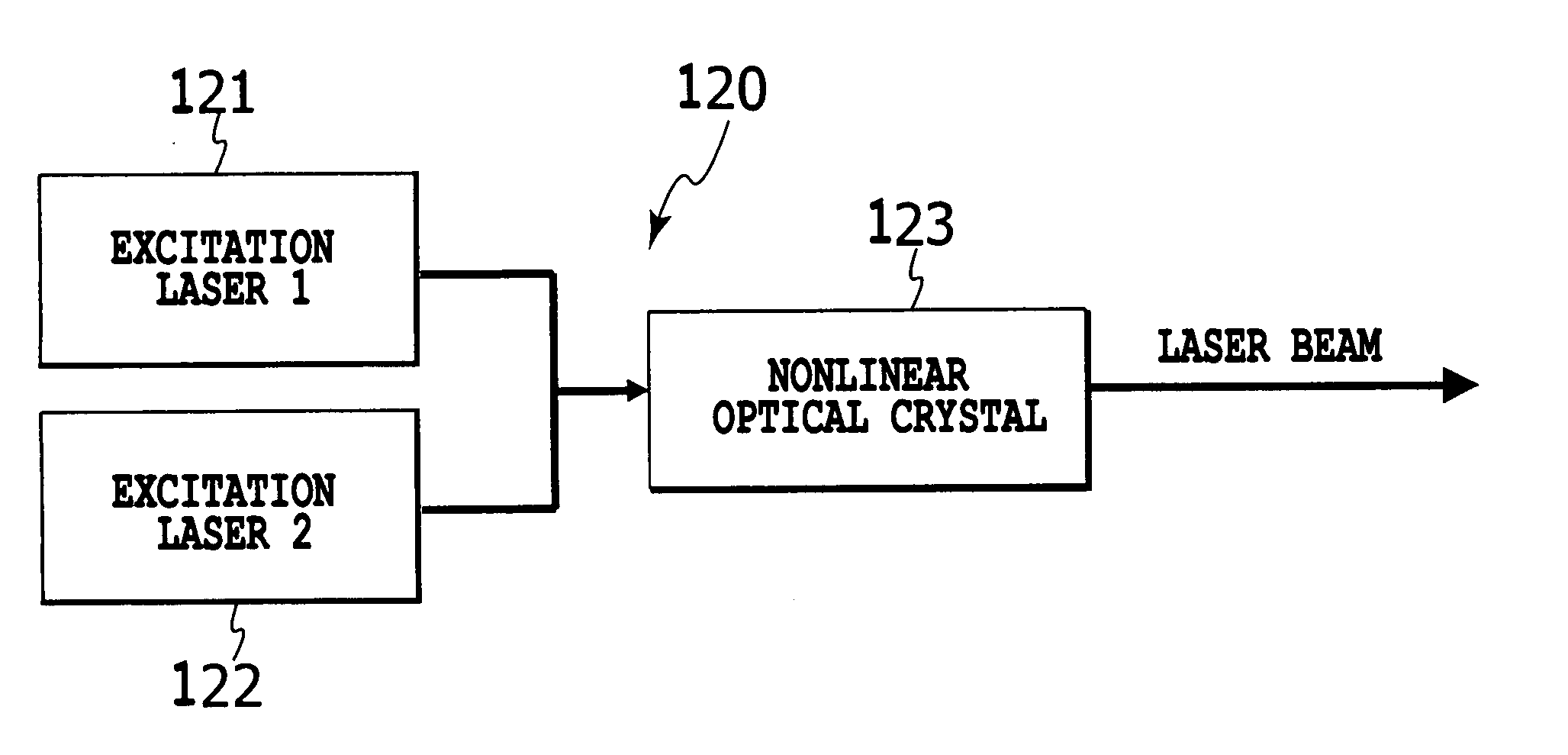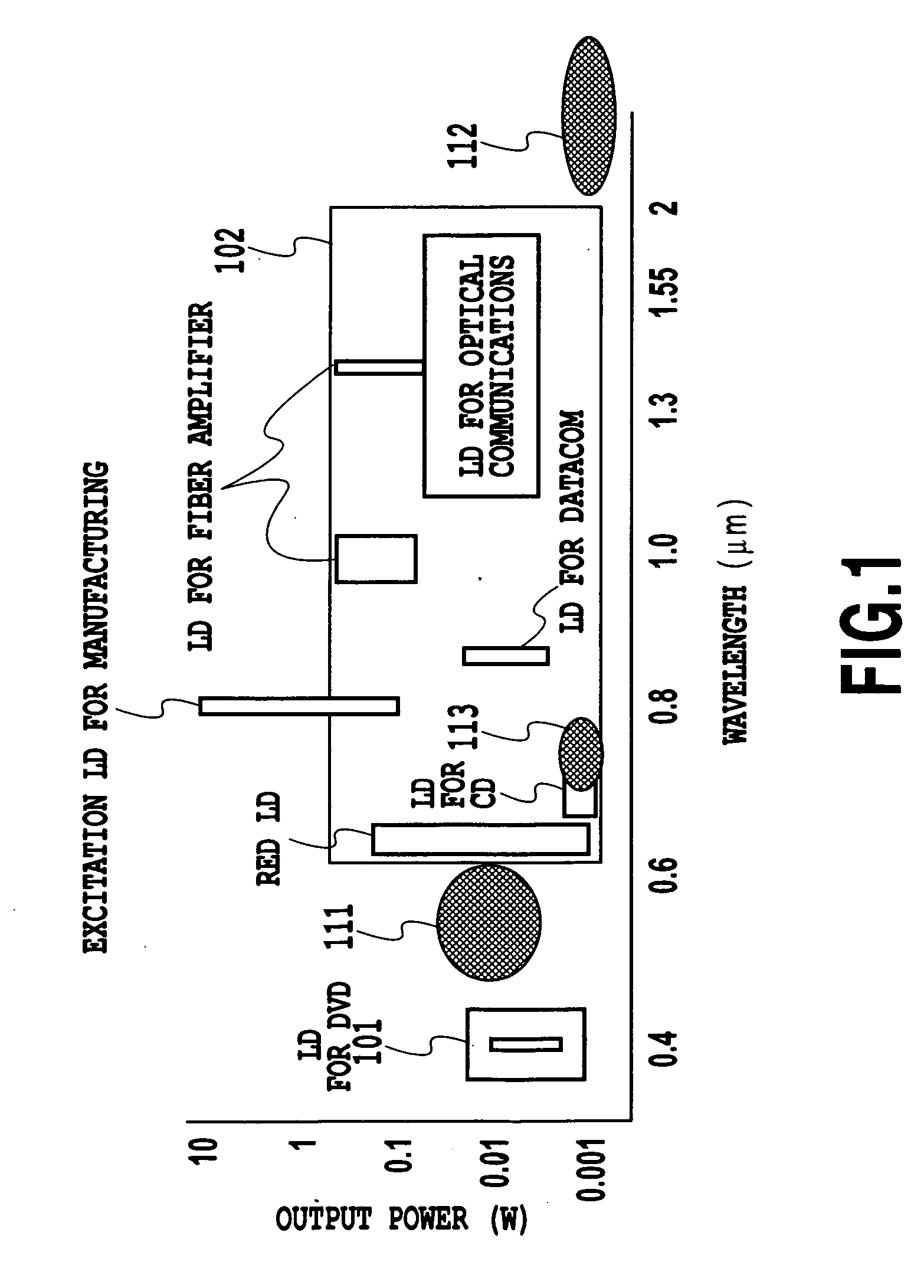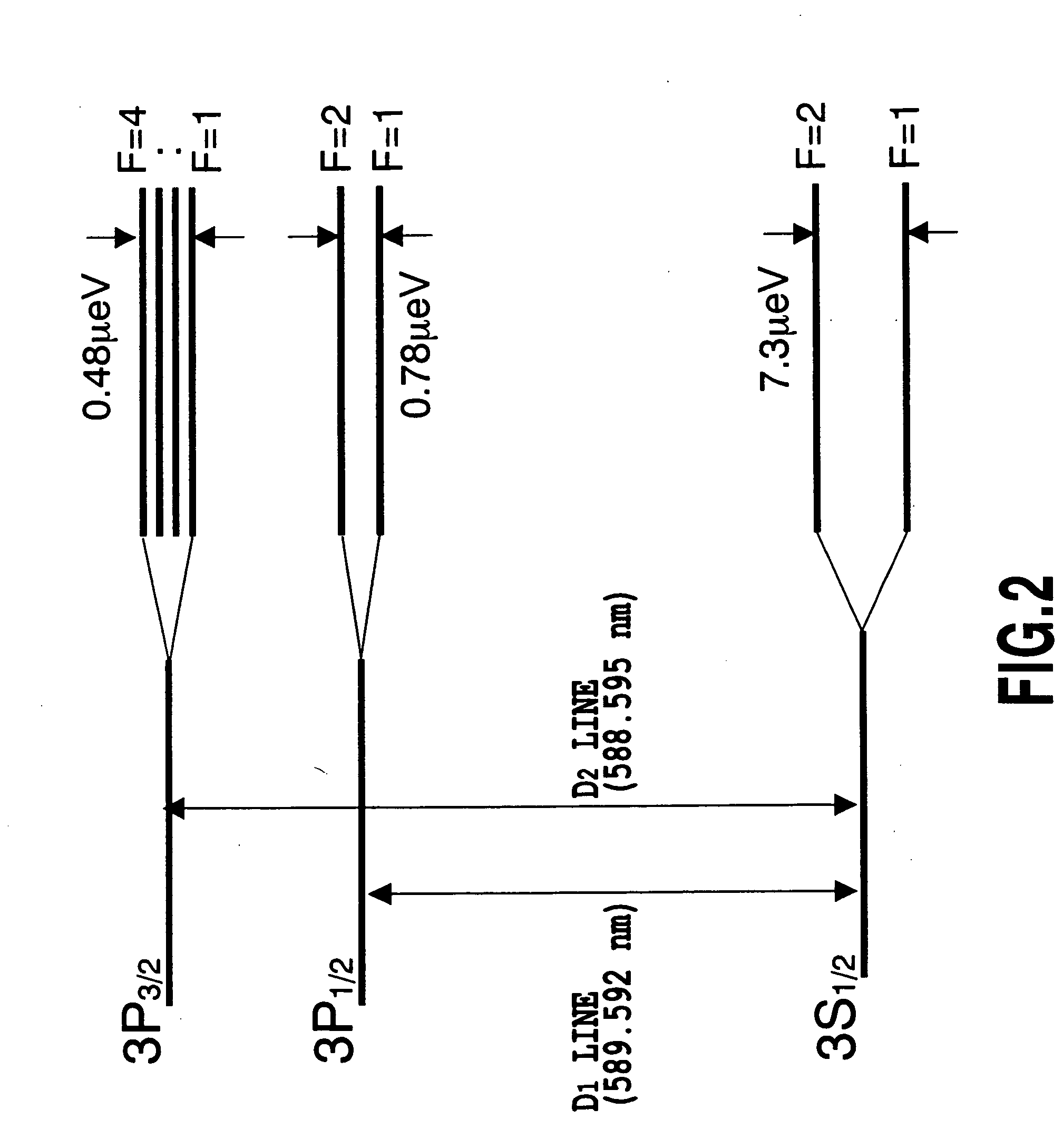Laser light source
a laser light source and laser light technology, applied in semiconductor lasers, instruments, optics, etc., can solve the problems of difficult accurate measurement of optical characteristics, high cost of gas laser and solid-state laser, and inability to put semiconductor lasers into practical us
- Summary
- Abstract
- Description
- Claims
- Application Information
AI Technical Summary
Benefits of technology
Problems solved by technology
Method used
Image
Examples
first embodiment
[0089] In sum frequency generation using a nonlinear crystal, the wavelength λ3 of the sum frequency light is expressed by the following formula, using the wavelengths of the two excitation beams represented by λ1 and λ2.
1 / λ3=1 / λ1+1 / λ2 (1)
In order to generate the sum frequency light equivalent to the sodium D1 line and D2 line, it is necessary to select λ1 and λ2 that give λ3=589.592 nm or 588.995 nm in the formula (1) and then combine the excitation lasers 121,122 of the two wavelengths with the nonlinear optical crystal 123.
[0090] Moreover, to increase the generation efficiency of the sum frequency light, the following formula must be satisfied among propagation constants ki=2πni / λi (i=1, 2, 3) of the two incident beams in the nonlinear crystal (λ1, λ2), and of the sum frequency light (λb 3)
k3=k1+k2, (2)
where ni is a refractive index of the nonlinear crystal at λi. However, since the optical medium has a dispersion characteristic, the formula (2) is satisfied only under...
embodiment 1-1
[0109]FIG. 5 shows a laser light source of the sodium D-line wavelength according to Embodiment 1-1 of this invention. The laser light source is constructed with two excitation lasers 140,141, an LN144 whose polarization was reversed periodically, lenses 142a, 142b for collimating laser beams of the excitation lasers 140, 141, a multiplexer 143 for multiplexing two laser beams, and a filter 145 for separating the laser beams of the excitation lasers 140, 141 that passed through the LN144 and the sum frequency light generated in the LN 144.
[0110] The wavelength λ1 of the excitation laser 140 and the wavelength λ2 of the excitation laser 141 are specified of to be of a combination that satisfies
1 / λ1+1 / λ2=1 / (589.3±2.0).
Moreover, λ1 and λ2 are in wavelength bands that satisfy any one of the following sets.
[0111]λ1=976±10 nm, λ2=1485±20 nm
[0112]λ1=1064±10 nm, λ2=1320±20 nm
[0113]λ1=940±10 nm, λ2=1565±35 nm
The semiconductor laser of λ2 may be a DFB laser.
[0114] When the excitatio...
embodiment 1-2
[0115]FIG. 6 shows a laser light source of the sodium D-line wavelength according to Embodiment 1-2 of this invention. A difference from the laser light source of Embodiment 1-l lies in a nonlinear optical crystal. For the nonlinear optical crystal, a periodically poled LN waveguide 151 such that a waveguide was formed in an LN crystal was used. Moreover, the nonlinear optical crystal has a lens 150 that couples the incident laser beam to the periodically poled LN waveguide 151 efficiently and a lens 152 that collimates the emitted beam from the periodically poled LN waveguide 151.
[0116] When the excitation laser 140 was set so that a wavelength λ1=1064 nm and the incident intensity on the LN 144 was 50 mW and the excitation laser 141 was set so that a wavelength λ2=1320 nm and the incident intensity on the LN 144 was 70 mW, the sum frequency light whose wavelength λ3 was 589.1 nm and output was 10 mW was obtained.
PUM
| Property | Measurement | Unit |
|---|---|---|
| wavelength | aaaaa | aaaaa |
| wavelength λ2 | aaaaa | aaaaa |
| wavelength λ2 | aaaaa | aaaaa |
Abstract
Description
Claims
Application Information
 Login to View More
Login to View More - R&D
- Intellectual Property
- Life Sciences
- Materials
- Tech Scout
- Unparalleled Data Quality
- Higher Quality Content
- 60% Fewer Hallucinations
Browse by: Latest US Patents, China's latest patents, Technical Efficacy Thesaurus, Application Domain, Technology Topic, Popular Technical Reports.
© 2025 PatSnap. All rights reserved.Legal|Privacy policy|Modern Slavery Act Transparency Statement|Sitemap|About US| Contact US: help@patsnap.com



